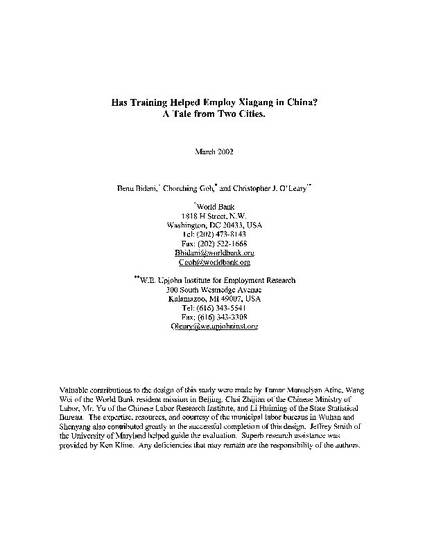
This study evaluates the effectiveness of training programs for workers retrenched from Chinese state-owned enterprises in the cities of Shenyang and Wuhan. A variety of impact estimators were applied, however ordinary least squares (OLS) controlling for observable characteristic s was robust. We find that training dampens reemployment prospects in Shenyang but improves them in Wuhan. Training impact estimates computed by propensity score and log odds ratio matching imposing various support condition rules, yielded estimates very similar to those from the OLS. The estimates suggest that participation in training reduces the probability of being employed one year after participation by about 6 percentage points in Shenyang, but increases the employment likelihood by about 8 percentage points in Wuhan. Among those who are reemployed, training does not have any effect on earnings.
